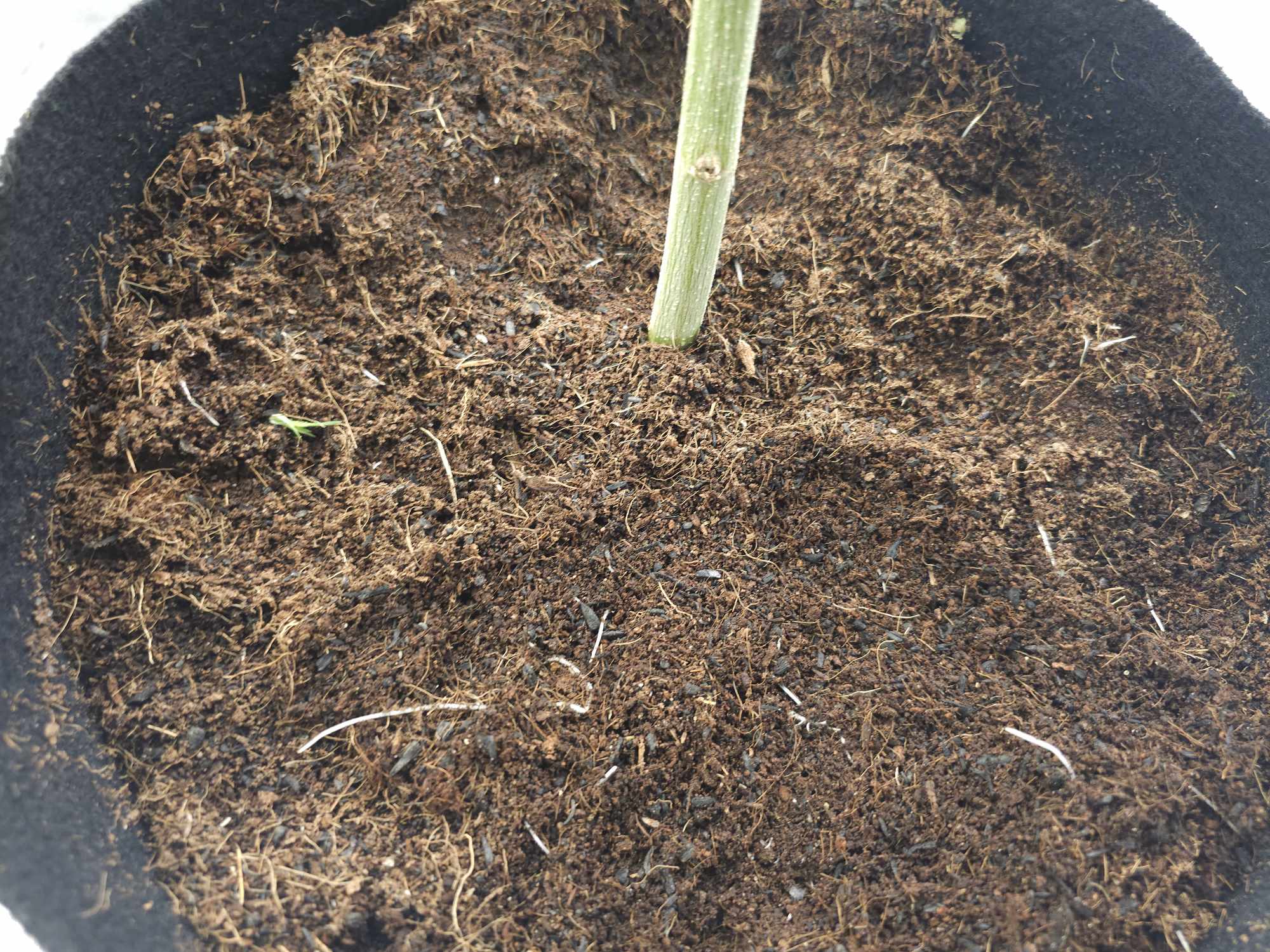
Welcome to the amazing world of the rhizosphere—the busy area where soil and plant roots come together. This underground zone is full of life, with helpful microbes and nutrients all working to keep plants healthy and growing strong. For cannabis growers, understanding how the rhizosphere works can lead to stronger and more productive plants.
The rhizosphere is more than just soil around the roots; it’s an active environment where roots release substances that attract good bacteria and fungi. These tiny helpers make it easier for the plant to absorb nutrients and fight off diseases, playing a big role in how well cannabis plants grow. In this blog, we’ll explore how this important zone works and give you tips to make the most of it, whether you’re new to growing or have lots of experience. Let’s dig into the soil and discover the secrets of this important ecosystem.
Table of Contents
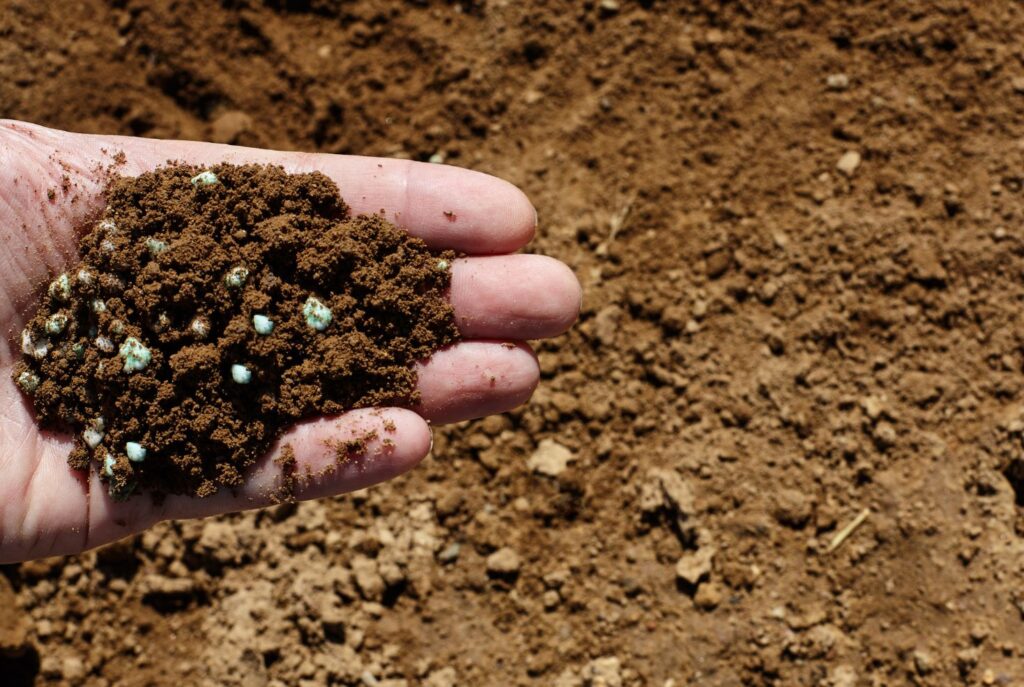
Root Exudation: The Secret Language of Roots
Imagine if you could talk to your plants and they could talk back. Well, in the rhizosphere, they’re doing just that, but instead of using words, they’re using chemicals. Root exudation is like the plant’s way of texting the soil microbiome, sending out messages in the form of organic compounds. It’s a lively chat room down there, and everyone’s invited to the party.
The Chemistry of Conversation
- Organic Compound Cocktails: Cannabis roots secrete a complex mix of sugars, amino acids, organic acids, and secondary metabolites. Think of it as the plant’s way of mixing cocktails for its microbial friends—the better the cocktail, the more beneficial microbes it attracts.
- Microbial RSVP: These root exudates aren’t just a free lunch; they’re invitations to a symbiotic shindig. Beneficial fungi and bacteria receive these chemical signals and RSVP by colonizing the root zone, ready to help the plant absorb nutrients and fend off pests.
The Alchemy of Alteration
- Soil Makeover: Beyond attracting a microbial entourage, root exudates can alter the physical and chemical properties of the soil. It’s like the roots are interior designers, tweaking the soil’s pH and structure to make it the perfect home.
- Nutrient Networking: By changing the soil environment, these exudates ensure that nutrients are more available to the plant. It’s a bit like unlocking a treasure chest of soil nutrients, with root exudates as the key.
Signaling for Support
- Help Wanted Ads: Some exudates serve as distress signals, calling in microbial reinforcements when the plant is under attack by pests or diseases. It’s the plant’s version of lighting the Bat-Signal, summoning its microbial allies to come to its defense.
- Recruiting the Right Crowd: The fascinating part is how specific these signals can be, recruiting exactly the right type of helper for the job. Need nitrogen? There’s a bacterium for that. Phosphorus? Fungi to the rescue.
The Impact of Root Exudation on Organic Cannabis Cultivation
- Building a Microbial Metropolis: For organic cannabis growers, encouraging a vibrant, diverse microbial community through healthy root exudation is key. It’s about creating the ultimate underground metropolis, where every microbe has a role to play in supporting plant health.
- Organic Practices Enhance the Conversation: By using organic amendments, practicing no-till farming, and ensuring a diverse plant community, growers can enhance root exudation. It’s like upgrading from text messages to full HD video calls, making the communication between roots and soil life clearer and more effective.
Root exudation is a reminder of the incredible intelligence of plants and the intricate ecosystems they create and sustain. For organic cannabis cultivators, understanding and supporting this root-soil communication network is essential, turning their gardens into thriving hubs of life and activity, all starting with the secret language of roots.
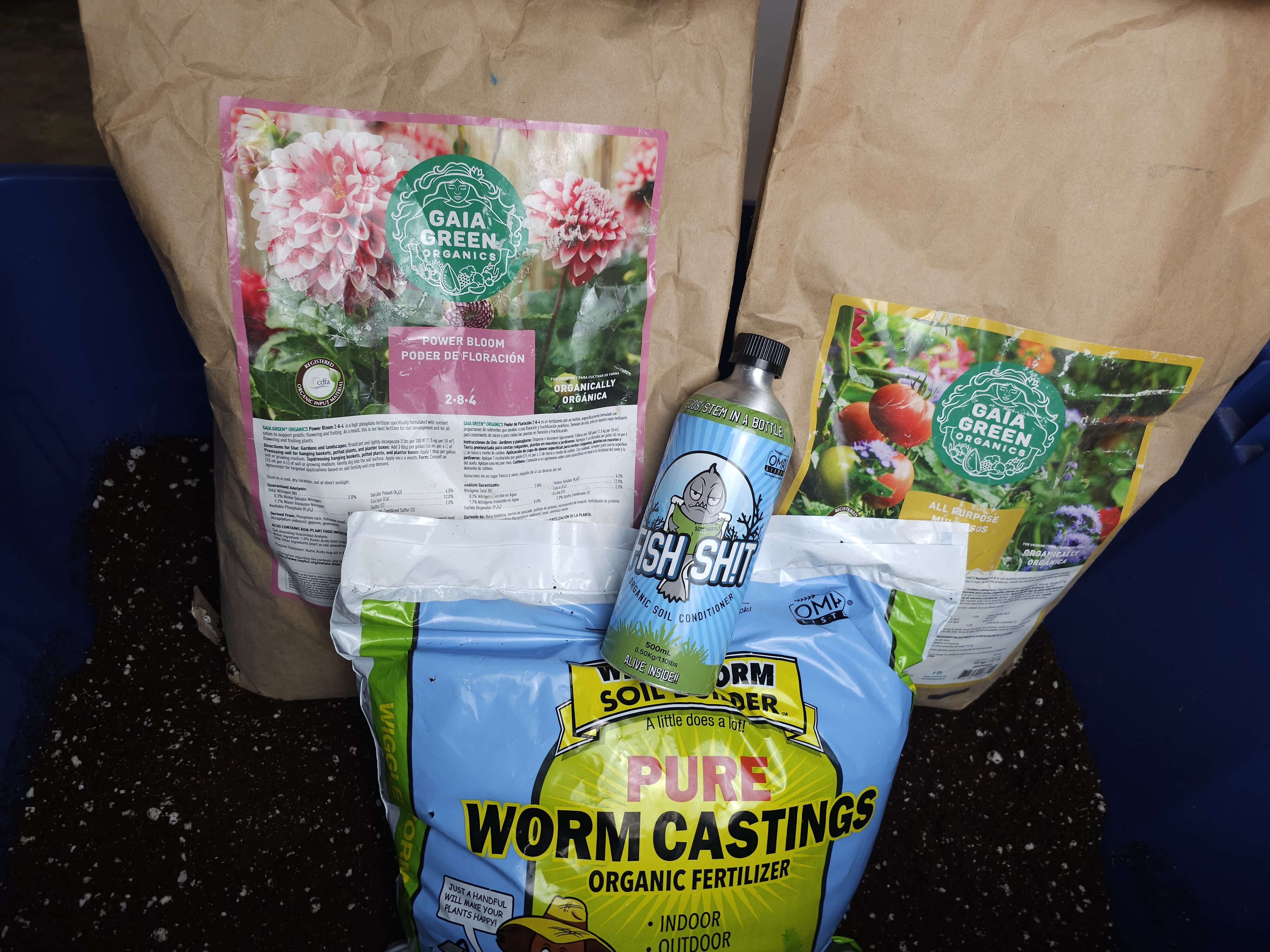
Organic Amendments: Nourishing Your Medium
In the world of organic cannabis cultivation, the soil is not just a medium but a vibrant habitat. Organic amendments are the feast that fuels this underground celebration, inviting a myriad of beneficial organisms to dine, dance, and ultimately, support our cannabis plants in their growth and health.
Compost: The All-You-Can-Eat Buffet
- Decomposed Delights: Compost, the decomposed remnants of once-living things, acts as a smorgasbord for soil life. It’s rich in nutrients and teeming with microbial life, ready to contribute to the soil’s fertility and structure.
- A Story of Transformation: Imagine your kitchen scraps, yard waste, and fallen leaves embarking on a journey of transformation, ending as a dark, crumbly feast that enriches the soil and feeds the microscopic guests at the rhizosphere party.
Animal Manures: The Specialty Dish
- Nutrient-Rich Nourishment: Well-aged animal manures, from cows, chickens, and even bats (guano), are like the specialty dishes at the soil banquet. High in nitrogen, phosphorus, and potassium, they’re a potent source of food for both plants and microorganisms.
- A Note of Caution: Just like a rich dessert, too much of a good thing can be problematic. It’s important to use manures that are well-composted to avoid burning plants with too much nitrogen or introducing pathogens to the garden.
Green Manures: The Live Music
- Cover Crops that Rock: Green manures, or cover crops, are planted not to be harvested but to be turned back into the soil. Think of them as the live band at the party, bringing life and vitality. When they’re turned into the soil, they decompose, adding organic matter and nutrients, and improving soil structure.
- A Diverse Playlist: Planting a mix of cover crops, such as legumes (which fix nitrogen from the air) and deep-rooted plants (which break up compacted soil), creates a harmonious melody that benefits the soil in multiple ways.
Worm Castings: The Signature Cocktail
- Worms: The Master Mixologists: Worm castings, or vermicompost, are the result of earthworms breaking down organic matter. These castings are like the signature cocktail of the rhizosphere party, packed with nutrients and beneficial microbes.
- Boosting Plant Health: Using worm castings in the soil is akin to giving your plants a health elixir, promoting vigorous growth and enhancing resistance to diseases.
The Magic of Mulches: The Party Decor
- A Layer of Protection: Organic mulches, such as straw, wood chips, or leaf litter, are not just decorative; they regulate soil temperature, retain moisture, and as they decompose, add organic matter back into the soil.
- Inviting Beneficial Life: Mulches also provide a habitat for beneficial insects and microorganisms, contributing to the dynamic life of the rhizosphere.
The End Result: A Thriving Underground Party
Through the strategic use of organic amendments, we not only feed our cannabis plants but also nurture the entire soil ecosystem. It’s a holistic approach that recognizes the interconnectedness of life in the garden, ensuring that the rhizosphere—the heart of organic cannabis cultivation—remains a bustling, lively, and fertile place.
By keeping the underground party alive and well with a rich mix of organic amendments, we set the stage for growing healthy, robust cannabis plants that are as organic and vibrant as the soil they grow in.

Embracing the Unturned Earth: The No-Till Advantage in Organic Cannabis Cultivation
No-till farming is like throwing a party for the soil’s microorganisms and keeping the celebration going year-round. This method conserves the soil structure, retains moisture, and supports a bustling underground community that, in turn, nurtures the cannabis plants.
Preserving Soil Structure: The Framework of Life
- A Strong Foundation: Untilled soil retains its layers, which are naturally designed to protect and nurture seeds and roots. This untouched structure allows for the development of pore spaces for air and water, essential for root respiration and hydration.
- Worm Highways and Microbial Byways: Earthworms and other soil organisms create channels as they move through the soil, improving aeration and drainage. These natural tunnels are highways for roots and microbial byways, facilitating the transport of nutrients and water.
Enhancing Soil Life: The Rhizosphere’s Residents
- Microbial Metropolis: No-till conditions mimic the natural environment where soil microbes thrive. This method preserves the microbial ecosystem, crucial for nutrient cycling, disease suppression, and overall soil health.
- Symbiotic Partnerships: The undisturbed soil becomes a haven for beneficial relationships, such as those between roots and mycorrhizal fungi. These fungi extend the root system’s reach, enhancing water and nutrient uptake.
Boosting Nutrient Availability: The Untapped Feast
- Organic Matter as a Constant Buffet: No-till farming relies on the surface application of organic amendments, such as compost, mulches, and cover crops. As these materials decompose, they release nutrients gradually, creating a steady supply of food for the plants.
- Natural Nutrient Cycling: The intact soil structure and thriving microbial life work together to break down organic matter and transform nutrients into plant-available forms, minimizing the need for external fertilizers.
Water Conservation and Quality: The Natural Reservoir
- Improved Water Retention: The organic matter on the soil’s surface acts as a mulch, reducing evaporation and helping the soil retain moisture. This layer, along with the preserved soil structure, increases water infiltration and storage, reducing the need for frequent watering.
- Filtering and Purification: As water moves through the unturned layers of soil, it’s naturally filtered. This process helps maintain water quality, preventing runoff and protecting local waterways.
Fighting Erosion and Enhancing Resilience: The Shield Against Stress
- A Barrier Against Erosion: The intact surface layer of organic matter and undisturbed soil structure act as a barrier against water and wind erosion, protecting the soil from being washed or blown away.
- Climate Resilience: No-till plots tend to be more resilient to extreme weather conditions. The improved soil structure and moisture retention can help cannabis plants withstand drought, while the rich organic matter and microbial life support recovery from heavy rains.
Cultivating with Care: No-Till as a Philosophy
Adopting no-till farming in organic cannabis cultivation is more than a practice; it’s a commitment to working in harmony with nature. This approach respects the complexity and vitality of the soil ecosystem, leveraging its natural processes to support healthy, productive cannabis plants. By preserving the rhizosphere’s integrity and fostering its inhabitants, growers not only enhance their crops but also contribute to the health of the planet.
No-till farming underscores the principle that the most vibrant and sustainable cannabis gardens are those that mimic nature’s own designs, proving that sometimes, the best action is inaction, allowing the soil to maintain its undisturbed, teeming life.

Sustainable Water Management: Nurturing Cannabis with Care
In the realm of organic cannabis cultivation, water is revered as a precious resource. The practices adopted not only aim to meet the needs of the plants but also to protect water quality and conserve supplies. This balanced approach supports a vibrant rhizosphere, ensuring that the soil and its myriad inhabitants remain hydrated and healthy.
Efficient Irrigation: The Art of Precise Watering
- Drip Irrigation: This method delivers water directly to the base of the plants, minimizing waste and evaporation. It’s like giving each plant its own personal water bottle, ensuring it gets just the right amount of hydration without unnecessary spillage.
- Soaker Hoses: Similar to drip irrigation, soaker hoses allow water to seep out slowly, targeting the root zone directly. They’re ideal for maintaining an even moisture level in the soil, encouraging deep root growth and efficient water use.
Timing and Measurement: Watering with Wisdom
- The Early Morning Ritual: Watering in the early morning takes advantage of cooler temperatures and less wind, reducing evaporation and allowing water to penetrate deeply into the soil before the heat of the day.
- Moisture Monitoring: Using moisture meters or the simple feel test (checking soil moisture with a finger) helps determine when watering is actually needed, preventing overwatering and conserving water.
Mulching: Nature’s Moisture Manager
- A Protective Layer: Applying a layer of organic mulch, such as straw, leaves, or wood chips, around cannabis plants helps retain soil moisture, reduce surface evaporation, and keep the soil cool.
- Dual Benefits: Beyond moisture retention, mulches gradually break down, adding organic matter to the soil and supporting the vibrant life within the rhizosphere.
Rainwater Harvesting: Capturing Nature’s Offering
- Collecting the Bounty: Rainwater harvesting systems, from simple barrels to more complex setups, capture rainwater for later use in the garden. This practice not only conserves municipal water but also provides plants with soft, natural water free of chlorine and other additives.
- A Cycle of Sustainability: Using rainwater reduces demand on local water supplies and aligns with the organic principle of working in harmony with natural cycles.
Protecting Water Quality: Beyond the Garden
- Preventing Runoff: Sustainable practices ensure that excess nutrients and sediments don’t wash into local waterways, protecting aquatic ecosystems and maintaining the purity of water sources.
- Organic Inputs: By using organic fertilizers and pest management strategies, organic growers avoid introducing synthetic chemicals into the environment, further safeguarding water quality.
The Ripple Effect: Water Conservation and the Bigger Picture
Sustainable water management in organic cannabis cultivation is about more than just growing plants; it’s about contributing to a larger ecosystem and conserving a vital resource for future generations. These practices underscore the interconnectedness of all living things and the role of responsible agriculture in preserving our planet.
By adopting efficient, mindful water use, organic cannabis growers not only nurture their plants but also support the health of the soil, the vitality of the rhizosphere, and the well-being of the earth. It’s a testament to the power of organic cultivation to sustain not just the crops we grow but the world we inhabit.
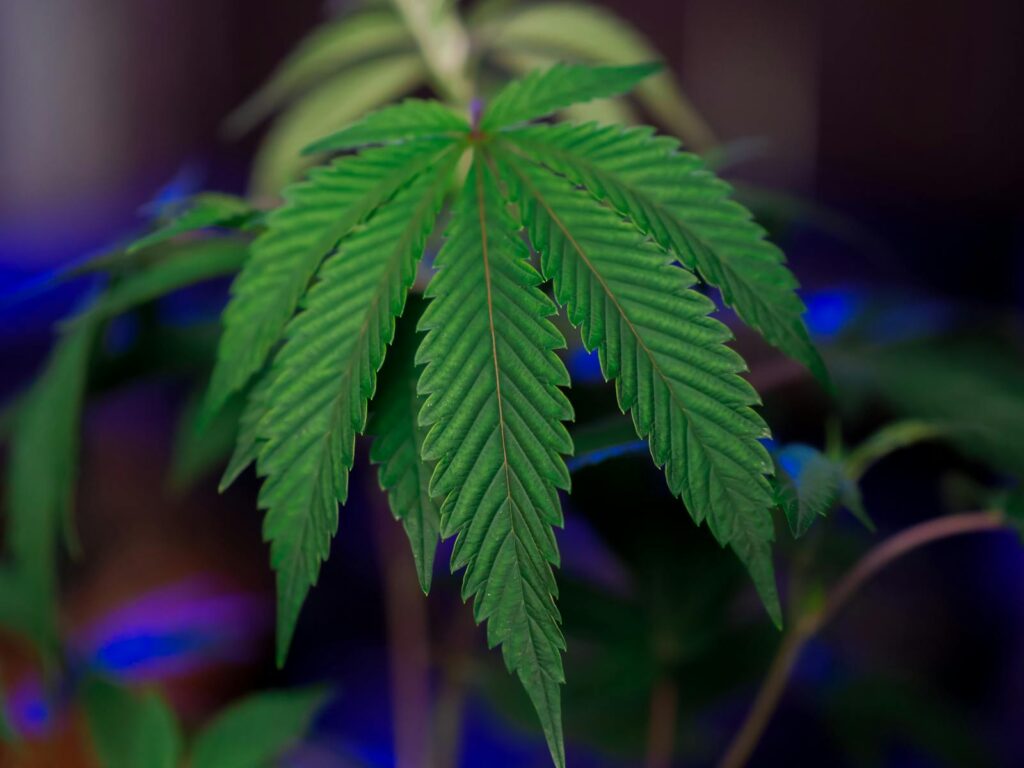
The pH Pendulum: Balancing Nutrient Availability in Organic Cannabis Cultivation
pH, a measure of the acidity or alkalinity of the soil, is more than just a number; it’s a key that unlocks the nutritional potential of the rhizosphere. The right pH balance ensures that cannabis plants can access the nutrients they need to grow, flower, and produce potent buds.
Understanding pH and Its Impact on Nutrients
- A Narrow Window for Cannabis: Cannabis thrives in a slightly acidic soil environment, typically between 6.0 and 7.0 pH. This range optimizes the availability of most essential nutrients.
- Locked Out or Locked In: When pH levels drift too far from this ideal, nutrients become less available. Some may be locked away, unable to be absorbed by the roots, while others might reach toxic levels, both scenarios leading to nutrient imbalances and plant stress.
Influencing Factors: What Shifts pH in the Rhizosphere?
- Organic Amendments: The materials added to the soil, like compost, manures, and mulches, can influence its pH over time. Their decomposition and interaction with the soil’s existing chemistry play a part in gradual shifts.
- Water Quality: The pH of irrigation water can also affect soil pH, especially when waterings are frequent. Using water that is too acidic or alkaline can tip the delicate balance of the rhizosphere.
- Plant Root Activity: The exudation of organic acids or uptake of certain ions by plant roots can locally alter the pH in the rhizosphere, affecting nutrient solubility near the root zone.
Managing pH in Organic Cannabis Gardens
- Testing and Monitoring: Regular testing of soil and water pH is crucial for staying ahead of potential issues. Simple pH meters or test kits can provide accurate readings, helping growers make informed decisions.
- Natural Adjustments: To raise soil pH, organic matter like crushed eggshells or hardwood ash can be incorporated. To lower pH, organic growers might use sulfur or composted pine needles, applying these amendments judiciously based on test results.
- Consistent Care: Maintaining the optimal pH is an ongoing task. It involves not just adjusting when things go awry but also using practices that promote a stable pH, such as applying balanced organic amendments and ensuring good water quality.
The Ripple Effects of pH Balance
Achieving and maintaining the right pH balance in the rhizosphere is akin to tuning an instrument, ensuring that each nutrient is available in harmony with the others, creating the perfect conditions for cannabis plants to flourish.
- Enhanced Nutrient Uptake: When pH is balanced, plants can efficiently absorb a wide range of nutrients, from macronutrients like nitrogen, phosphorus, and potassium to essential micronutrients.
- Stronger Plant Health: Optimal pH contributes to robust plant growth, resilience against pests and diseases, and the production of high-quality cannabis with potent aromas and flavors.
Balancing the pH in the rhizosphere is both an art and a science, requiring careful attention and a deep understanding of the soil-plant relationship. For organic cannabis cultivators, it’s a critical aspect of nurturing a thriving garden, ensuring that each plant can access the full spectrum of nutrients needed to reach its potential. Through diligent management of pH, growers not only support the health of their cannabis but also contribute to the vitality of the rhizosphere, the heart of organic cultivation.
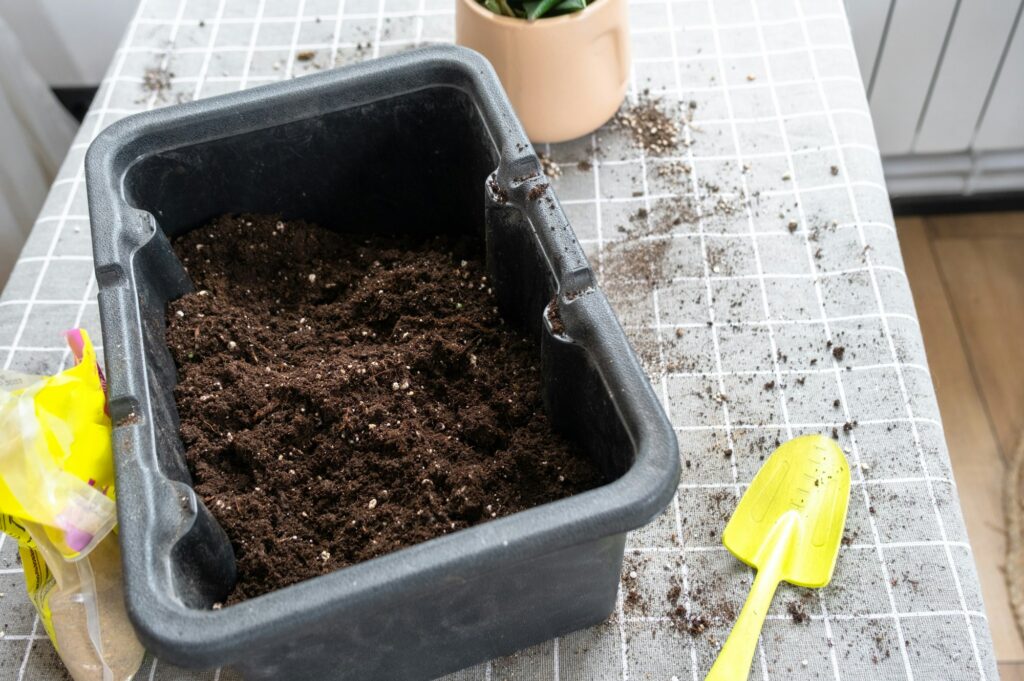
The Green Guardians: Cover Crops in Enhancing Soil Health and Fertility
Cover crops, a diverse group of plants sown between regular production periods, are a cornerstone of regenerative agriculture practices. Their implementation in organic cannabis cultivation can significantly impact the health of the rhizosphere, turning good soil into great soil and ensuring a bountiful, sustainable harvest.
Nourishing the Soil from Within
- Natural Fertilizers: Certain cover crops, particularly legumes like clover and vetch, have the remarkable ability to fix atmospheric nitrogen, converting it into a form that cannabis plants can readily absorb. This process naturally enriches the soil, reducing or eliminating the need for synthetic nitrogen fertilizers.
- Organic Matter Addition: When cover crops are cut down and left to decompose on the soil surface or are tilled into the soil, they contribute significant organic matter. This addition improves soil structure, enhancing porosity and water retention, and feeds the myriad of microorganisms that call the rhizosphere home.
Rooting for Soil Structure and Erosion Control
- Deep Divers and Soil Aerators: The roots of cover crops, especially those of deep-rooted varieties, can break up compacted soil layers, improving aeration and water infiltration. This root action can also bring up nutrients from deeper soil layers, making them available to the cannabis plants that follow.
- A Living Mulch: Cover crops act as a living mulch, covering the soil surface and protecting it from the erosive forces of wind and water. This protective cover not only prevents soil erosion but also helps maintain consistent soil moisture levels.
Pest and Disease Management
- Natural Pest Deterrents: Some cover crops can repel specific pests or provide a habitat for beneficial insects that prey on common cannabis pests. This natural pest control method reduces the need for chemical pesticides, keeping the rhizosphere healthy and balanced.
- Disease Suppression: The diversity of cover crops can help suppress soil-borne diseases. By introducing different plant species into the rotation, growers can break the life cycles of pathogens that would otherwise thrive in a monoculture environment.
Encouraging Biodiversity and Resilience
- A Diverse Ecosystem: The variety of cover crops planted can significantly increase biodiversity in and above the soil. This diversity fosters a more resilient ecosystem capable of withstanding pests, diseases, and extreme weather conditions.
- Weed Suppression: The dense growth of cover crops can outcompete weeds for space, light, and nutrients, reducing the labor and resources needed for weed management.
Implementing Cover Crops in the Cannabis Garden
Choosing the right cover crops and knowing when to plant and turn them under are crucial for maximizing their benefits. A mix of legumes, grasses, and brassicas, tailored to the specific needs of the soil and the main cannabis crop, can provide a balanced approach to soil enhancement.
- Seasonal Planning: Planting cover crops during the off-season or between cannabis planting cycles can keep the soil covered and active year-round, preventing nutrient leaching and soil degradation.
- Integration with No-Till Practices: Pairing cover crops with no-till farming methods can further enhance the soil structure and fertility, creating an ideal environment for organic cannabis cultivation.
Cover crops are a testament to the power of working with nature to enhance agricultural productivity sustainably. In the organic cannabis garden, they offer a pathway to healthier soil, more robust plants, and ultimately, a more sustainable cultivation practice that honors the earth and its cycles.
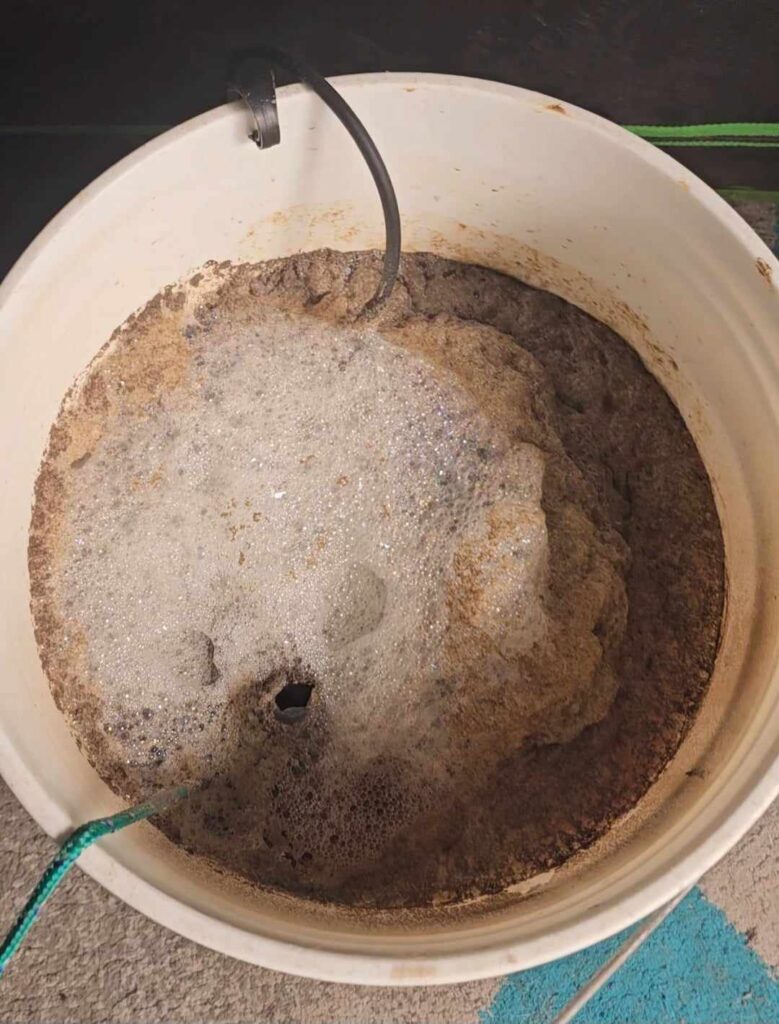
Brewing Vitality: The Role of Compost Tea in Organic Cannabis Cultivation
In the quest for robust, healthy cannabis plants, compost tea serves as a versatile ally, bridging the gap between traditional composting methods and modern organic cultivation needs. This section delves into how compost tea enhances soil health, boosts plant immunity, and contributes to the overall sustainability of organic cannabis gardens.
A Microbial Feast for the Rhizosphere
- Enhanced Microbial Diversity: Compost tea introduces a diverse community of beneficial microorganisms into the soil, enriching the rhizosphere’s microbial ecosystem. These microorganisms play critical roles in nutrient cycling, organic matter decomposition, and the suppression of pathogenic bacteria and fungi.
- Improved Nutrient Availability: The microbial action in compost tea helps break down complex organic compounds into simpler forms that cannabis plants can easily absorb. This process ensures that plants receive a balanced diet of essential nutrients, promoting vigorous growth and resilience.
Fortifying Plant Health and Immunity
- Disease Suppression: The beneficial microbes in compost tea compete with and inhibit the growth of disease-causing organisms. By colonizing the plant’s root zone and foliage, they create a protective barrier that enhances the plant’s natural defenses against pathogens.
- Induced Systemic Resistance (ISR): Regular applications of compost tea can stimulate the plant’s innate immune system, preparing it to better resist infections and pest attacks. This ISR mechanism is akin to vaccinating the plant against potential threats, bolstering its overall health and vitality.
The Liquid Advantage: Accessibility and Efficiency
- Foliar Feeding: When applied as a foliar spray, compost tea delivers nutrients and beneficial microbes directly to the plant’s leaves, where they can be quickly absorbed. This method can be particularly effective in addressing nutrient deficiencies or giving plants a quick boost during critical growth phases.
- Root Zone Rejuvenation: Drenching the soil with compost tea ensures that the beneficial microbes and nutrients infiltrate the root zone, promoting a healthy, active rhizosphere that supports robust root development and nutrient uptake.
Crafting the Perfect Brew: Considerations and Techniques
- Quality Ingredients: The effectiveness of compost tea is directly related to the quality of the compost used. Organic, well-aged compost rich in microbial life forms the best base for your tea.
- Aeration and Brewing Time: Oxygenating the tea during brewing encourages the proliferation of aerobic microbes, which are generally more beneficial for cannabis plants. The brewing time can vary, but a well-aerated tea typically reaches peak microbial activity within 24 to 36 hours.
Sustainability in a Teapot: Environmental Benefits
- Reduced Waste and Resource Use: Compost tea maximizes the utility of compost, stretching the benefits of a finite amount of organic matter across a larger area or number of plants. This efficiency contributes to the sustainability of organic cannabis cultivation practices.
- Chemical-Free Gardening: By providing a natural alternative to synthetic fertilizers and pesticides, compost tea aligns with organic principles, minimizing the environmental impact of cannabis cultivation and supporting the health of the surrounding ecosystem.
Compost tea embodies the essence of organic cultivation, blending tradition, science, and sustainability into a potent tool for enhancing garden health. Through its application, growers can tap into the natural synergies between plants and microbes, fostering a vibrant, thriving cannabis garden that is as resilient as it is productive.

The Microbial Metropolis: Enhancing Rhizosphere Diversity in Organic Cannabis Cultivation
The rhizosphere’s microbial diversity is akin to a bustling city beneath the soil, with its inhabitants—bacteria, fungi, protozoa, and more—performing essential roles that support plant health, growth, and resilience. This section delves into the significance of these microscopic allies and how organic practices can promote their beneficial activities.
The Symbiotic Symphony
- Nutrient Cycling: Microbial inhabitants of the rhizosphere play a pivotal role in breaking down organic matter, converting nutrients into forms that cannabis plants can readily absorb. This natural process eliminates the need for synthetic fertilizers, aligning with organic principles.
- Disease Suppression: A diverse microbial community can outcompete and inhibit pathogenic organisms, offering a natural form of disease control that reduces reliance on chemical pesticides.
- Root Health and Growth: Certain microbes, such as mycorrhizal fungi, form symbiotic relationships with cannabis roots, extending their network in the soil and enhancing the plant’s access to water and nutrients. This partnership not only boosts plant growth but also strengthens root systems, making them more resilient to stressors.
Cultivating Diversity: Organic Practices That Nurture Microbial Life
- Compost and Compost Tea: Adding high-quality compost or applying compost tea introduces a wide array of beneficial microbes to the soil, instantly boosting microbial diversity and activity in the rhizosphere.
- Cover Cropping: Planting cover crops increases organic matter and supports a range of soil organisms, contributing to a more dynamic microbial ecosystem.
- Reduced Soil Disturbance: Practices such as no-till farming preserve the soil structure and microbial habitats, allowing communities to flourish undisturbed.
- Crop Rotation: Rotating cannabis with other plant species prevents the buildup of pathogenic organisms and encourages a broader spectrum of microbial life, each adapted to different plant hosts.
The Impact of Microbial Diversity
- Enhanced Plant Nutrition: A diverse microbial community ensures efficient nutrient cycling and availability, leading to healthier, more vigorous cannabis plants.
- Improved Soil Structure: The activities of soil microbes, particularly fungi and bacteria, help bind soil particles into aggregates, improving porosity, aeration, and water retention.
- Increased Resilience: Diverse microbial populations equip plants to better withstand environmental stresses, including drought, pathogens, and pest invasions.
The Role of Growers in Microbial Stewardship
Organic cannabis growers are not just cultivators of plants but stewards of the soil’s microbial life. By adopting practices that enhance microbial diversity, they contribute to a self-sustaining ecosystem that supports robust plant growth and ecological balance. Understanding the intricate relationships within the rhizosphere allows growers to harness the power of nature in their cultivation practices, leading to a more sustainable, productive, and resilient garden.
The significance of microbial diversity in the rhizosphere extends beyond the immediate benefits to cannabis plants. It’s a testament to the interconnectedness of all life forms and the crucial role that unseen microbial communities play in the health of our planet. By fostering these microscopic allies, organic cannabis cultivation becomes a model for sustainable agriculture, showcasing how human endeavors can coexist harmoniously with nature’s intricate web of life.

Embracing the Organic Ethos: A Sustainable Path Forward
Organic cannabis cultivation embodies a commitment to environmental stewardship, sustainability, and the production of high-quality, pure cannabis. By prioritizing the health of the soil and the diversity of life it sustains, growers tap into the ancient wisdom of nature, cultivating cannabis that is not only potent and flavorful but also grown in harmony with the planet.
The Foundation of Healthy Soil
The health of the soil is paramount in organic cultivation. Practices such as no-till farming, the application of compost tea, and the integration of cover crops serve to enhance soil structure, increase microbial diversity, and maintain a balanced ecosystem. These methods contribute to a self-regulating environment where cannabis plants can thrive without synthetic aids.
The Role of Microbial Diversity
Microbial diversity within the rhizosphere is a testament to the complexity and resilience of organic systems. These microorganisms play essential roles in nutrient cycling, disease suppression, and the enhancement of plant growth and immunity. By nurturing this underground community, growers ensure that their cannabis plants are supported by a robust and vibrant soil ecosystem.
Sustainable Practices for a Greener Future
Organic cannabis cultivation aligns with broader environmental goals, offering a model for sustainable agriculture that reduces the reliance on chemical inputs, conserves water, and promotes biodiversity. It’s a practice that not only yields exceptional cannabis but also contributes to the health of our planet, preserving resources for future generations.
Cultivating Change: The Impact Beyond the Garden
The principles of organic cannabis cultivation extend beyond the individual garden, influencing the wider agricultural community and consumer perceptions. It challenges us to reconsider our relationship with the natural world, advocating for practices that respect and restore the earth’s delicate balance.
The rhizosphere is a crucial and dynamic environment that plays a vital role in plant health and nutrient uptake. Understanding this intricate zone, where soil, microorganisms, and plant roots interact, can greatly enhance your ability to cultivate robust and healthy cannabis plants. A well-managed rhizosphere leads to better nutrient absorption, improved soil structure, and greater resilience against pests and diseases.
To further optimize your cannabis cultivation, it’s essential to understand the specific nutrients that are critical for plant growth. For a comprehensive overview, explore our guide on Essential Nutrients for Plant Growth. This article covers the key macro and micronutrients necessary for healthy plant development, providing insights into how each nutrient supports different growth stages.
Additional Resources:
- Grow That Sh!t Better by Maximus Reigns – An essential eBook for both novice and experienced growers, offering advanced techniques and tips for improving cannabis cultivation.
- Cannabis Growers’ Handbook by Ed Rosenthal – A comprehensive guide that covers all aspects of growing cannabis, from setup to harvest.
- Royal Queen Seeds Blog – A rich resource for growers, featuring articles on growing techniques, strain information, and more.
- Need Cannabis Seeds? – Seedsman Seeds has a variety of seeds for all growers from new and seasoned to medical and CBD users.
- Grow Weed Easy – A website dedicated to providing step-by-step guides and resources for growing cannabis at home.
These resources will deepen your understanding of the rhizosphere and the essential nutrients needed for optimal plant growth. By mastering these aspects, you can create a thriving, healthy growing environment that maximizes the potential of your cannabis plants. Happy growing!
Whether you’re a seasoned organic cannabis cultivator or a curious green thumb, the exploration of organic cultivation practices offers insights and inspiration for a greener, more sustainable approach to gardening and agriculture as a whole.
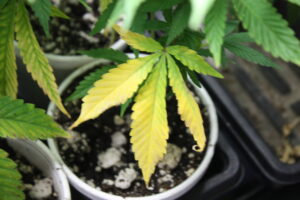









D. Smox
wow